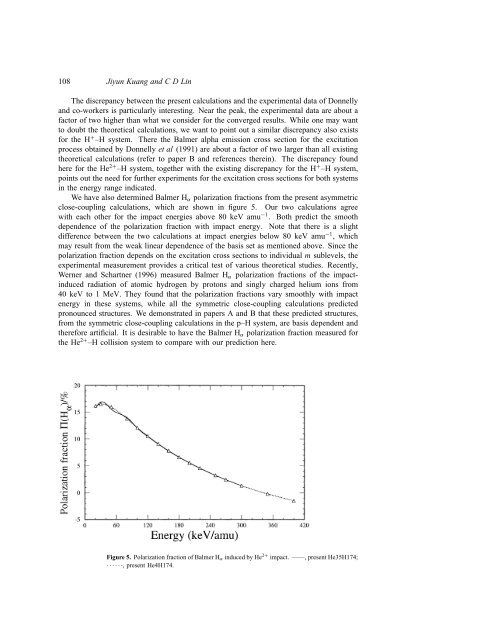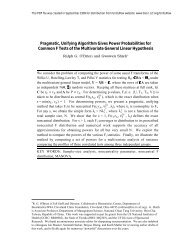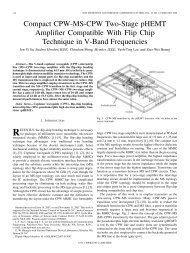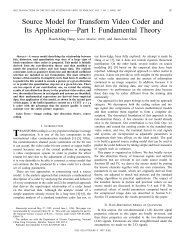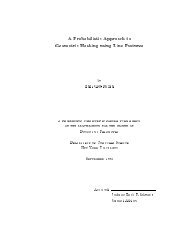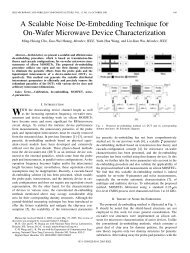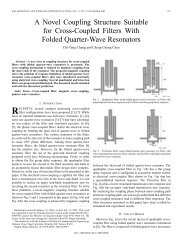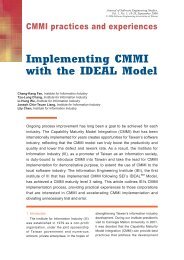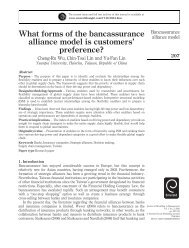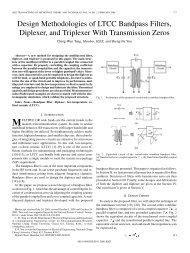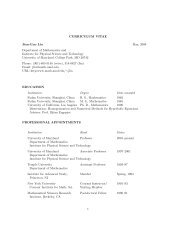J. Phys. B: At. Mol. Opt. Phys. 30
J. Phys. B: At. Mol. Opt. Phys. 30
J. Phys. B: At. Mol. Opt. Phys. 30
You also want an ePaper? Increase the reach of your titles
YUMPU automatically turns print PDFs into web optimized ePapers that Google loves.
108 Jiyun Kuang and CDLin<br />
The discrepancy between the present calculations and the experimental data of Donnelly<br />
and co-workers is particularly interesting. Near the peak, the experimental data are about a<br />
factor of two higher than what we consider for the converged results. While one may want<br />
to doubt the theoretical calculations, we want to point out a similar discrepancy also exists<br />
for the H + –H system. There the Balmer alpha emission cross section for the excitation<br />
process obtained by Donnelly et al (1991) are about a factor of two larger than all existing<br />
theoretical calculations (refer to paper B and references therein). The discrepancy found<br />
here for the He 2+ –H system, together with the existing discrepancy for the H + –H system,<br />
points out the need for further experiments for the excitation cross sections for both systems<br />
in the energy range indicated.<br />
We have also determined Balmer H α polarization fractions from the present asymmetric<br />
close-coupling calculations, which are shown in figure 5. Our two calculations agree<br />
with each other for the impact energies above 80 keV amu −1 . Both predict the smooth<br />
dependence of the polarization fraction with impact energy. Note that there is a slight<br />
difference between the two calculations at impact energies below 80 keV amu −1 , which<br />
may result from the weak linear dependence of the basis set as mentioned above. Since the<br />
polarization fraction depends on the excitation cross sections to individual m sublevels, the<br />
experimental measurement provides a critical test of various theoretical studies. Recently,<br />
Werner and Schartner (1996) measured Balmer H α polarization fractions of the impactinduced<br />
radiation of atomic hydrogen by protons and singly charged helium ions from<br />
40 keV to 1 MeV. They found that the polarization fractions vary smoothly with impact<br />
energy in these systems, while all the symmetric close-coupling calculations predicted<br />
pronounced structures. We demonstrated in papers A and B that these predicted structures,<br />
from the symmetric close-coupling calculations in the p–H system, are basis dependent and<br />
therefore artificial. It is desirable to have the Balmer H α polarization fraction measured for<br />
the He 2+ –H collision system to compare with our prediction here.<br />
Figure 5. Polarization fraction of Balmer H α induced by He 2+ impact. ——, present He35H174;<br />
······, present He4H174.


